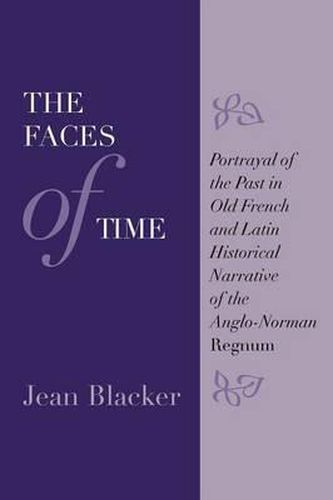Readings Newsletter
Become a Readings Member to make your shopping experience even easier.
Sign in or sign up for free!
You’re not far away from qualifying for FREE standard shipping within Australia
You’ve qualified for FREE standard shipping within Australia
The cart is loading…






This title is printed to order. This book may have been self-published. If so, we cannot guarantee the quality of the content. In the main most books will have gone through the editing process however some may not. We therefore suggest that you be aware of this before ordering this book. If in doubt check either the author or publisher’s details as we are unable to accept any returns unless they are faulty. Please contact us if you have any questions.
The twelfth century witnessed the sudden appearance and virtual disappearance of an important literary genre–the Old French verse chronicle. These poetic histories of the British kings, which today are treated as fiction, were written contemporaneously with Latin prose narratives, which are regarded as historical accounts. In this pathfinding study, however, Jean Blacker asserts that twelfth-century authors and readers viewed both genres as factual history.
Blacker examines four Old French verse chronicles–Gaimar’s Estoire des Engleis (c. 1135), Wace’s Roman de Brut (c. 1155) and Roman de Rou (c. 1160-1174), and Benoit de Sainte-Maure’s Chronique des Ducs de Normandie (c. 1174-1180) and four Latin narratives–William of Malmesbury’s Gesta Regum (c. 1118-1143) and Historia Novella (c. 1140-1143), Orderic Vitalis’s Historia Ecclesiastica (c. 1118-1140), and Geoffrey of Monmouth’s Historia Regum Britanniae (c. 1138). She compares their similarity in three areas–the authors’ stated intentions, their methods of characterization and narrative development, and the possible influences of patronage and audience expectation on the presentation of characters and events.
This exploration reveals remarkable similarity among the texts, including their idealization of historical and even legendary figures, such as King Arthur. It opens fruitful lines of inquiry into the role these writers played in the creation of the Anglo-Norman regnum and suggests that the Old French verse chronicles filled political, psychic, and aesthetic needs unaddressed by Latin historical writing of the period.
$9.00 standard shipping within Australia
FREE standard shipping within Australia for orders over $100.00
Express & International shipping calculated at checkout
This title is printed to order. This book may have been self-published. If so, we cannot guarantee the quality of the content. In the main most books will have gone through the editing process however some may not. We therefore suggest that you be aware of this before ordering this book. If in doubt check either the author or publisher’s details as we are unable to accept any returns unless they are faulty. Please contact us if you have any questions.
The twelfth century witnessed the sudden appearance and virtual disappearance of an important literary genre–the Old French verse chronicle. These poetic histories of the British kings, which today are treated as fiction, were written contemporaneously with Latin prose narratives, which are regarded as historical accounts. In this pathfinding study, however, Jean Blacker asserts that twelfth-century authors and readers viewed both genres as factual history.
Blacker examines four Old French verse chronicles–Gaimar’s Estoire des Engleis (c. 1135), Wace’s Roman de Brut (c. 1155) and Roman de Rou (c. 1160-1174), and Benoit de Sainte-Maure’s Chronique des Ducs de Normandie (c. 1174-1180) and four Latin narratives–William of Malmesbury’s Gesta Regum (c. 1118-1143) and Historia Novella (c. 1140-1143), Orderic Vitalis’s Historia Ecclesiastica (c. 1118-1140), and Geoffrey of Monmouth’s Historia Regum Britanniae (c. 1138). She compares their similarity in three areas–the authors’ stated intentions, their methods of characterization and narrative development, and the possible influences of patronage and audience expectation on the presentation of characters and events.
This exploration reveals remarkable similarity among the texts, including their idealization of historical and even legendary figures, such as King Arthur. It opens fruitful lines of inquiry into the role these writers played in the creation of the Anglo-Norman regnum and suggests that the Old French verse chronicles filled political, psychic, and aesthetic needs unaddressed by Latin historical writing of the period.